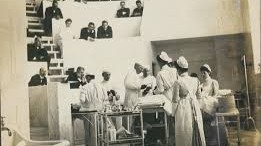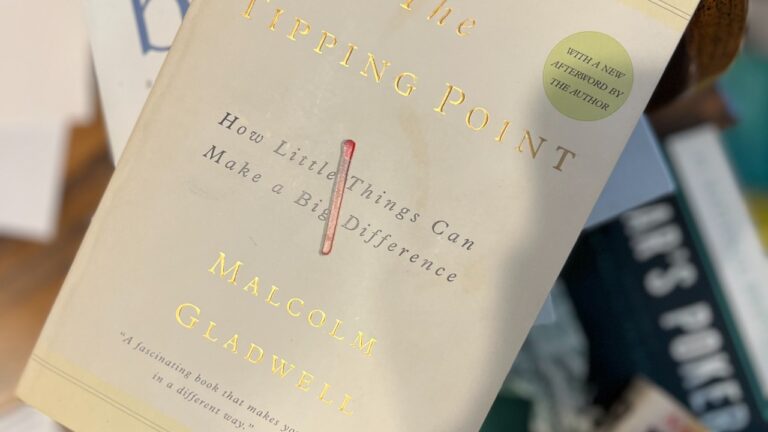Halsted: A Surgeons Double Life
The end of the Civil War marked the beginning of reorganization and transformation in American medicine. Doctors began to apply surgical techniques learned during the war; they felt more comfortable using anesthesia. Learning about sanitation, nursing, emergency transport, and hospital construction improved medical care. Basic science became part of medical school training; medical education became more formal and systematized. Mortality and morbidity from infectious illnesses and a misunderstanding of disease transmission remained significant problems.
An improved understanding of disease processes began with the opening ceremonies of Johns Hopkins Medical School on May 7, 1889. William Osler in medicine, Howard Kelly in gynecology, William Welch in pathology, and William Stewart Halsted in surgery formed a tetrarch of excellence that remains reflected in contemporary medical education and patient care. William Halsted transformed surgery.
Born to a family who had made a fortune as wholesalers of European dry goods, Halsted received the best education possible. A superb athlete but an indifferent student at Andover Academy and Yale, he made a remarkable transformation at The College of Physicians and Surgeons in New York City, graduating in the top ten of his 1877 class. Halsted had two years of post-graduate instruction in Europe following an 18-month internship at Bellevue Hospital and brief work as a house surgeon there. His experiences in Europe gave him a command of scientific methods and a more sophisticated approach to medicine.
Returning to the United States with an engaging spirit of intellectual inquiry, Halsted desired to establish a school of surgery to disseminate principles of excellence worldwide; he wanted to develop a system to generate competent surgeons who could teach proper techniques to others. He more than achieved this goal. Developing a residency system for training surgeons became Halsted’s most significant and enduring contribution to medical education. Postgraduate surgical residency continues to follow the Halsted approach.
Halsted was in charge; the chief resident was second in command, followed by a line of residents, each with diminishing experience. At each level, the surgeons trained and supervised those junior to them. From each senior class of surgical residents, Halsted selected one outstanding physician who would become chief resident under his tutelage the following year. That chief resident, in turn, would instruct the other residents down the line. The process would be repeated each year. Each senior class had as many as ten surgical residents. From that class, only one would become chief resident under Halsted.
Hospitals and medical schools, eager to have an experienced resident trained under Halsted, signed the other surgeons to become facility chief residents. Thus, Halsted’s pyramid of excellence moved from hospital to hospital. Within a few years of his appointment to Johns Hopkins, Halsted trained seventeen house surgeons, eleven of whom went on to establish university-type residencies like those at Hopkins. These eleven spawned 166 chief residents. Within a couple of decades, Halsted’s surgical methods and techniques had spread around the country.
Halsted is well known for his series of papers, written in the 1890s, describing a process of radical mastectomy in the treatment of breast cancer. Before Halsted’s surgical technique, breast cancer augured painful death in almost all victims of this dreaded and feared disease. Feeling hopeless, a woman with breast cancer would retreat to a lonely bedroom, ashamed of the expanding ulcerations, disgusting erosions, and purulent, foul-smelling orders induced by the carcinoma’s wretched march.
In reviewing the surgical literature on breast cancer, Halsted felt he could improve the grim outlook by increasing the area of excision. Halsted reported superior results in removing the chest-wall muscles and armpit contents, giving hope to thousands of women. A giant leap forward occurred. Women, no longer surrendering to a decaying, draining tumor, began visiting physicians at an earlier stage of the disease. Halsted’s so-called radical mastectomy saved thousands of lives. More importantly, hope makes earlier diagnosis possible. Lumpectomy has replaced radical mastectomy; radiotherapy and chemotherapy have replaced despair. Thousands of breast cancer survivors now live everyday lives.
Halsted also instituted specific surgical techniques in hernia repair. Before Halsted, a nonreducible groin bulge signaled almost certain death. Halsted’s technique of restoring normal anatomy consistent with tissues reduced the recurrence rate of inguinal hernias to less than 7% and decreased the mortality rate to much less than that. He made many advances in surgery of the thyroid, bile ducts, intestine, and arterial aneurysms.
In 1889, Halsted introduced sterile surgical gloves to asepsis, almost twenty years after Joseph Lister had written about the germ theory of disease. As with many scientific discoveries and innovative techniques, surgical gloves entered the surgical suite surreptitiously. Halsted became interested in using rubber gloves to protect the hands of his surgical nurse—“an unusually efficient woman”—Caroline Hampton, who was allergic to mercuric chloride. Soon, he promoted the use of rubber gloves to prevent post-op infections. On June 4, 1890, the “unusually efficient woman” became his wife.
Halsted made five immense contributions to the technical aspects of surgery:
- Evaluating the work of others, extracting the best of each, and synthesizing all into an advanced surgical approach
- An absolute bloodless operative field
- An anatomically perfect dissection of each structure
- Rigid sterility
- An accurate closure with delicate silk stitches of every layer of tissue
Halsted’s achievements were rendered more remarkable by a tragic misfortune. He was a drug addict and, following his addiction, a misanthrope. Chronic drug dependence transformed an energetic, dynamic young man into a diffident, inaccessible recluse. His ward rounds were so phlegmatic that students called them “shifting dullness.” (This insider joke refers to the specific sound heard when a physician taps a patient’s chest while performing a physical examination.)
Halsted, like Sigmund Freud, became addicted to cocaine when he was experimenting with the anesthetic properties of the compound. Unlike Freud, who overcame his addiction, Halsted substituted a morphine addiction for cocaine. In 1886, from May until November, Halsted spent seven months at Butler Hospital in Providence, Rhode Island, a leading mental hospital. Halsted reentered Butler Hospital again in 1887 in an attempt to shake the morphine dependency. Nine months of hospitalization failed to affect a cure.
Halsted’s wife, Caroline, was the niece of Confederate General Wade Hampton III, who suffered five war wounds and grieved the battle losses of his brother, Frank, and son, Preston. Following the war, Hampton found comfort on his 2000-acre retreat in the Blue Ridge Mountains just south of Cashiers, North Carolina. When Hampton died in 1902, Caroline purchased the property from one of her aunts, who had inherited it. William Halsted renamed the “High Hampton” estate after his family’s ancestral home in England, the “High Halsted.” Every summer, the Halsteds would leave Baltimore for the cool mountain air of High Hampton. After a month, Dr. Halsted would sail for Europe, secluding himself in expensive hotels with his companion morphine.
Although he never freed himself from his drug dependency, Halsted’s remarkable intelligence and ambition enabled him to accomplish almost all of his surgical innovations while under the curse of cocaine and, later, morphine. Just about everyone disliked him as much as they respected his brilliant innovations. His contributions continue to influence 21st-century surgery.



